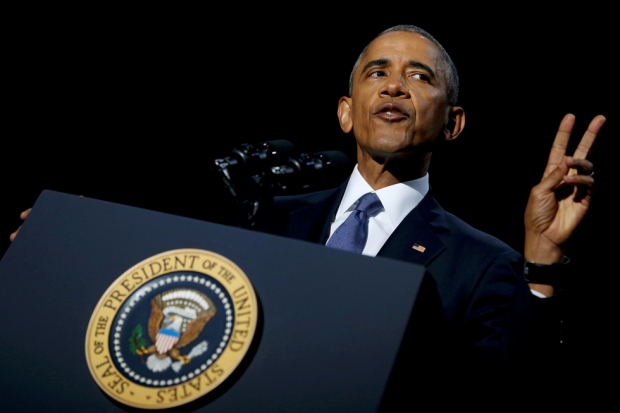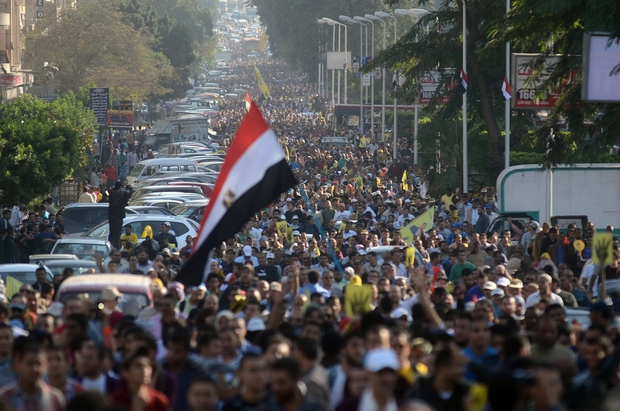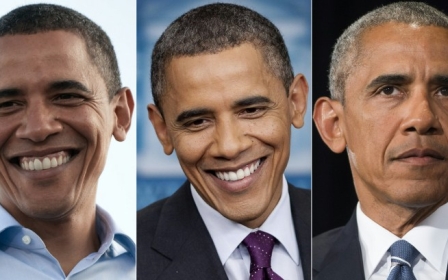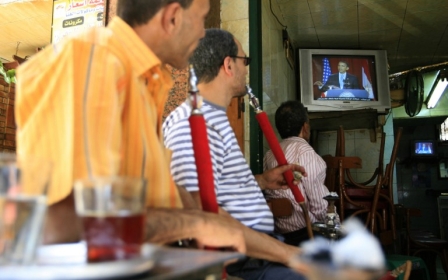Don't get misty-eyed about Obama: Look at the Middle East he left us
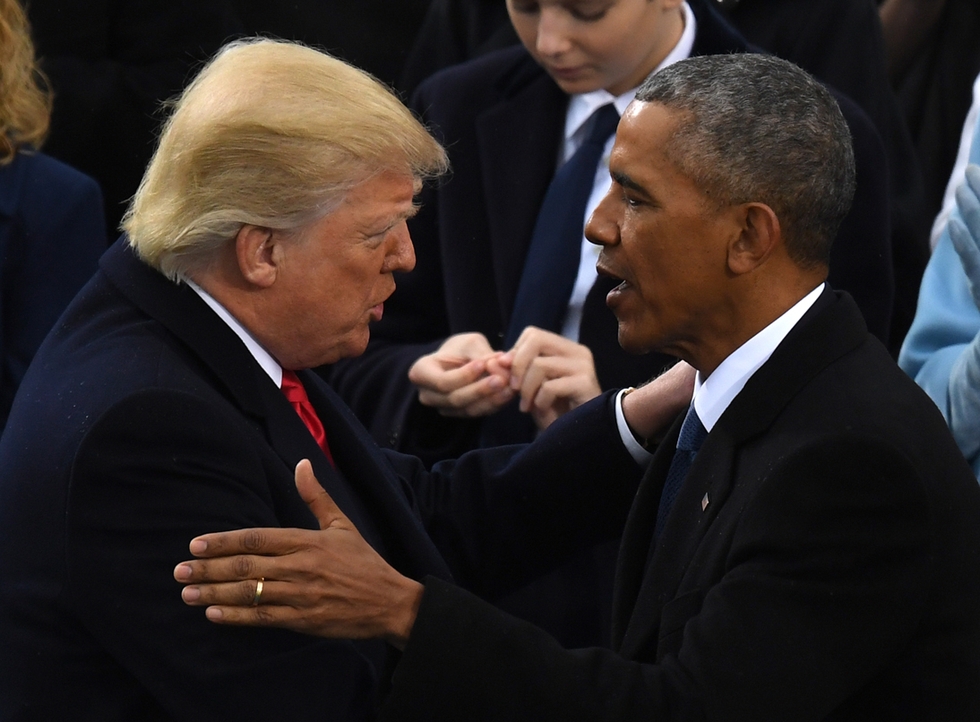
There is growing anxiety in a number of Arab circles, as well as in Turkey and Iran, about what the administration of Donald Trump might mean for the bearing of the Middle East.
The new president, who is known for adopting the rhetoric of the racist American right and for his blunt and provocative remarks, has not ceased to threaten Iran nor to talk about his friendship with Israel and his commitment to serving its interests.
Obama showed total disregard and indifference toward the struggle of the people and the sacrifices they made in pursuit of their freedom
In addition, he has repeatedly associated Islam with extremism and declared his determination to go after and eradicate what he has called the radical Islamists.
Under the most optimistic scenarios, and despite the lack of clarity in Trump's Middle East policy, the new US administration could potentially create more chaos and instability in a region already exhausted by war, internal conflicts and foolish external interventions.
READ: Trump and torture: It won't give him the intelligence he wants
However, concern about the intentions of Trump's administration should not make us forget president Barack Obama's legacy in the region and the role he played, especially during his second term, in laying the foundations for the chaos, blood and destruction across the Middle East.
Early promise
No American president has ever been received with the amicability that was shown by the peoples of the Middle East towards Obama. He was the first black president in the history of the most powerful and most important country in the world, a country that has been most interventionist in the affairs of the region and its peoples.
This was indeed a different sort of president. His middle name was Hussein. He was born to a Muslim Kenyan father and a white American mother. Her second husband was also a Muslim, from Indonesia. When it comes to governance and the policies of great nations, such considerations may not have much bearing. However, their weight in the intimate human relations of the Middle East cannot be denied.
One cannot forget the long and clear segments in Obama's Cairo speech about democracy and the necessity that political regimes in the Middle East should express the will of their peoples
Obama, who came to Washington from an academic background and who has profound knowledge, was aware of this link between the things that pertain to the background of a small family and the impression they may leave on the imagination of the region. It was no wonder that he reminded his audience of his uniqueness and of his family legacy during his long address to the Arab and Islamic world at Cairo University in June 2009.
Obama's Cairo speech
Yet when Obama took office in the United States, he was carrying in his quiver two divergent approaches to the Middle East. On the one hand, he adopted a policy of reconciliation with the Arabs and the Muslims in the aftermath of years of wild and costly war, waged by the administration of George W Bush.
It was obvious, as expressed in the address before the second forum of the United Nations Alliance of Civilizations in Istanbul, as well as at the Cairo University speech two months later, that the young US president was not only trying to contain the global tension generated by the policies of his predecessor, but was also endeavoring to reinstate the image of the United States as a force for peace, stability and friendship with world nations.
READ: Trump? A nastier George W Bush
In his Cairo University speech, which provided the clearest vision of Obama's Middle East approach, the president spoke about Islam as an Islamic scholar of Kalam (Islamic theology).
In unhidden sympathy, he spoke about America's endeavour to work with the peoples of the region in combating terrorist groups and about the necessity of establishing a just peace in the conflict over Palestine. He also talked about the Iranian nuclear file, about his administration's determination to withdraw from Afghanistan and Iraq and about development and the rights of women and minorities.
"There are some who advocate for democracy only when they are out of power; once in power, they are ruthless in suppressing the rights of others. No matter where it takes hold, government of the people and by the people sets a single standard for all who hold power: you must maintain your power through consent, not coercion; you must respect the rights of minorities, and participate with a spirit of tolerance and compromise; you must place the interests of your people and the legitimate workings of the political process above your party. Without these ingredients, elections alone do not make true democracy."
Within less than two years, right in the middle of Obama's first term, a powerful popular revolutionary movement erupted across the region, sweeping through Tunisia, Egypt, Libya, Yemen, Syria, Iraq and to some extent Morocco, Jordan and Bahrain. The movement demanded fair governance, genuine transition toward the democratic system and respect for human dignity and for the rule of law.
Washington at sea over Arab Spring
The initial response of the Obama administration seemed to be confused and perplexed. Yet, it should be remembered that Washington soon expressed unequivocal support for the Arab popular movement. Apart from that verbal support, Washington provided nothing tangible to back the Arab revolutionary movement. Nor did it offer anything to the newly emergent Arab regimes or to the peoples who embarked on the adventure of democratic transition.
Libya was the only exception. However, Obama's intervention in Libya was not driven by a genuine desire to play an active role in backing the movement of the people. It was instead aimed at saving the faces of America's European allies, who had already started the process of intervention against Gaddafi's forces but were not able to complete the mission to the very end.
With regard to Egypt, the Obama administration knew quite early on about the plot to carry out a military coup. It neither informed its Turkish allies, who had close links with the administration of then-president Mohamed Morsi, nor did it stand by him to prevent the coup perpetrators from executing their plans.
Apart from that verbal support, Washington provided nothing tangible to back the Arab revolutionary movement
As for Tunisia, successive Tunisian governments, which endured and continue to suffer heavy economic pressures, received nothing from Washington apart from compliments and words of sympathy.
In Iraq, the Obama administration implemented the withdrawal agreement that was concluded earlier by the Bush administration and left Iraq to fall prey to Iranian influence and then-prime minister Nouri al-Maliki's sectarianism. When the Iraqis began their peaceful movement against the regime of Maliki, the Obama administration stood by watching as it was crushed with force.
READ: US embassy in Jerusalem would tear apart international order
Unlike with Syria, Obama showed total disregard and indifference toward the struggle of the people and the sacrifices they made in pursuit of their freedom. In Syria, and exceptionally so, Washington encouraged the Syrians to rise and issued a series of statements, one after the other, asserting that the Assad regime had lost legitimacy and setting red line threats against the use of chemical weapons.
However, the Syrians were left in the end to fall prey to a criminal fascist regime, and to its allies Iran and Russia, without any attempt on the part of the Obama administration to provide the minimum level of resources that would have enabled the Syrians to defend themselves.
Obama's turn to the Pacific
The problem of inconsistency between Obama's early address, on the one hand, and his indifference toward the wars waged by despotic regimes against their peoples on the other, emanates from the basis of his policy toward the region.
Strategically, he had already decided to withdraw from the Middle East and give priority to the Pacific basin, while calling for democratic transition and good governance in the Middle East.
Obama came to power with the profound conviction that there was no hope in achieving anything meaningful in the Middle East
Obama came to power with the profound conviction that there was no hope of achieving anything meaningful in the Middle East. He could hardly disguise his contempt for the regimes allied with the United States in the region and for their rulers.
When he was compelled to revisit the Middle East during the summer of 2014 – after Islamic State had seized control of more than half of Iraq and established solid foundations in the east and north of Syria – he chose to wage war against IS using local tools: the Iraqi army, the sectarian Al-Hashd (Popular Mobilisation) and the Kurdish Peshmerga in Iraq, as well as the Syrian branch of the Kurdish Workers' Party (PKK).
READ: Trump is Obama's true legacy
In this way, America's limited return to the Middle East turned to be the cause of further chaos and great danger to the security of the region and its peoples.
There is nothing to justify welcoming the American intervention in the affairs of other peoples and states. However, when a certain state claims to be the frame of reference in world affairs, and when other states start behaving in a manner that takes that into consideration, then the leadership of this state has no option but to bear its global responsibilities.
Clearly, Obama did not realise the repercussions of his early address at Cairo University. Nor did he appreciate the responsibilities that the United States has toward the peoples whose cities and towns have been turned into a firing range for Russian fighter planes, for no reason other than demanding freedom and justice.
- Basheer Nafi is a senior research fellow at the Al Jazeera Centre for Studies.
The views expressed in this article belong to the author and do not necessarily reflect the editorial policy of Middle East Eye.
Photo: US President Donald Trump (L) shakes hands with former US President Barack Obama after being sworn in as President on January 20, 2017 at the US Capitol in Washington, DC. (AFP)
Middle East Eye propose une couverture et une analyse indépendantes et incomparables du Moyen-Orient, de l’Afrique du Nord et d’autres régions du monde. Pour en savoir plus sur la reprise de ce contenu et les frais qui s’appliquent, veuillez remplir ce formulaire [en anglais]. Pour en savoir plus sur MEE, cliquez ici [en anglais].



